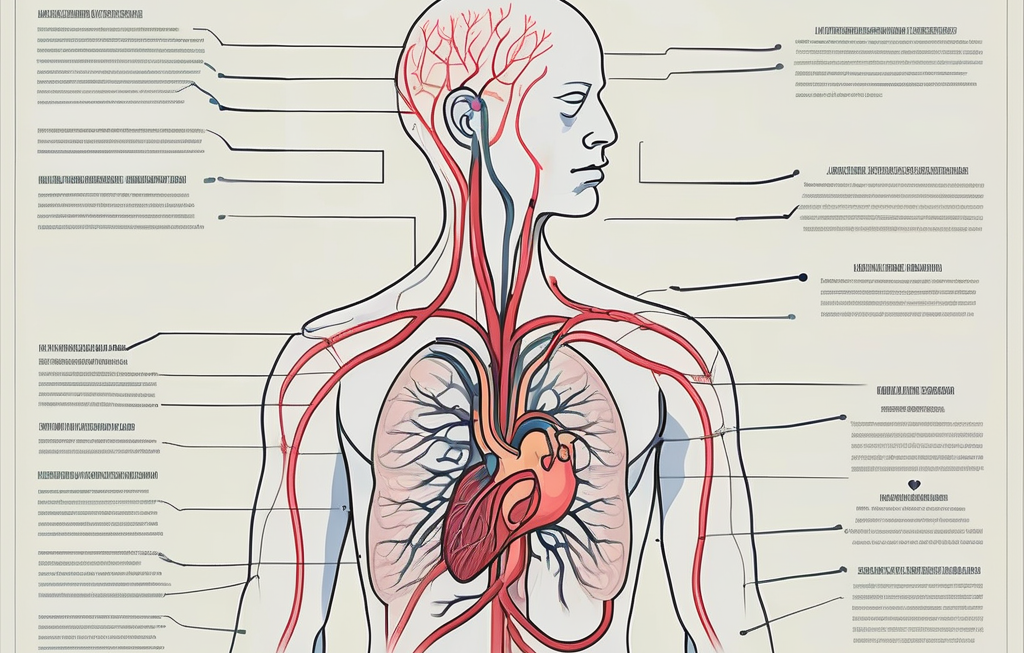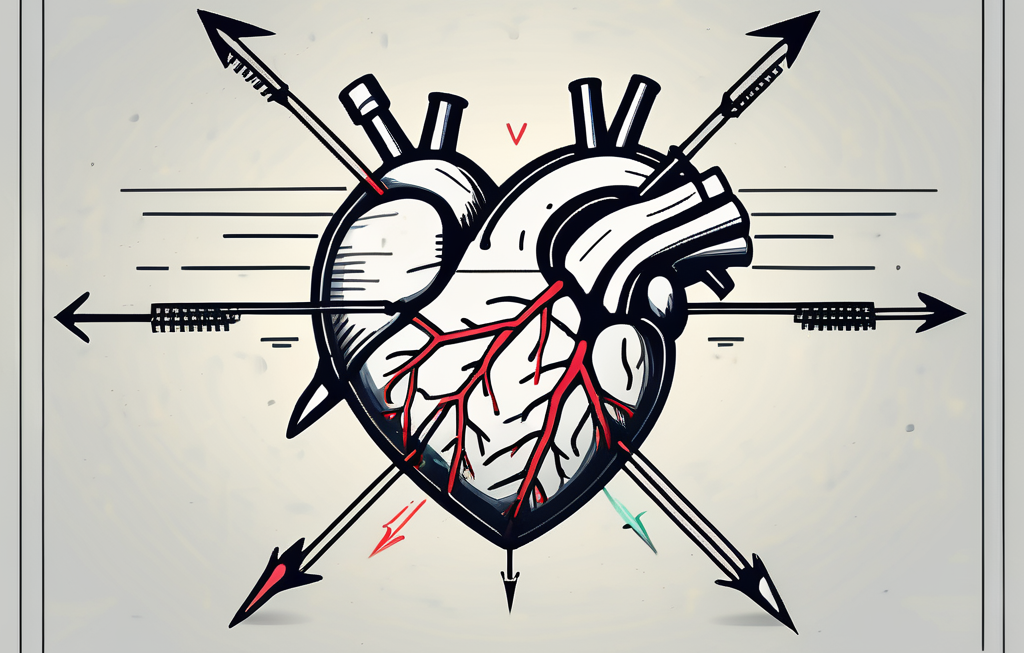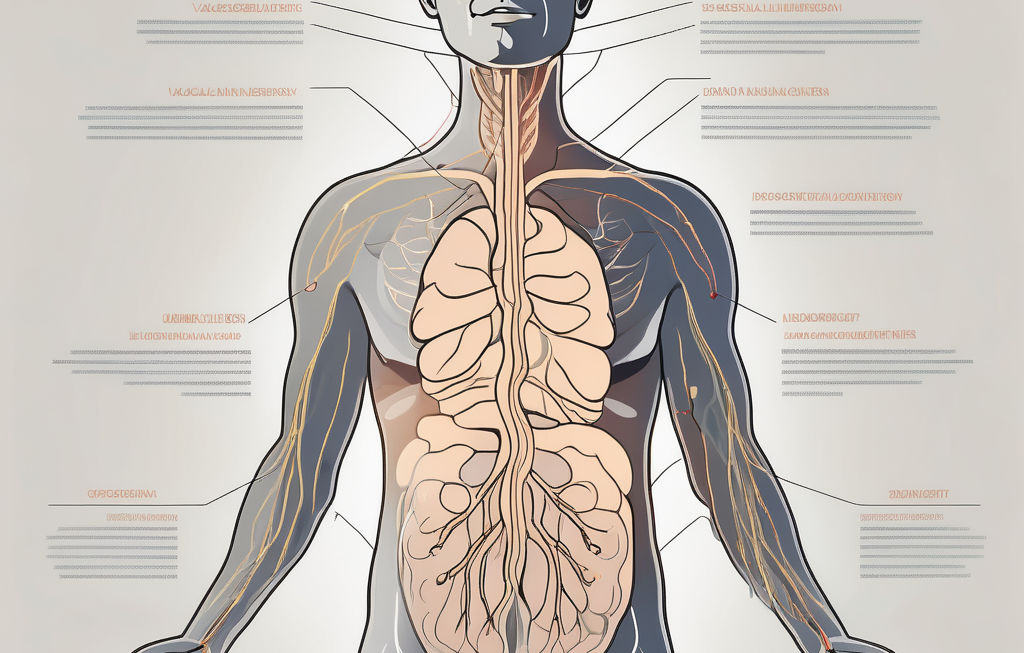Vagal escape is a fascinating physiological phenomenon that occurs in the body. Understanding how it manifests in tracings can provide valuable insights into our overall health and well-being. In this article, we will explore the concept of vagal escape, its role in the body, how to identify it in tracings, its impact on health, techniques to monitor it, and prevention and management strategies.
Understanding Vagal Escape
The Role of the Vagus Nerve in the Body
The vagus nerve, also known as the 10th cranial nerve, plays a crucial role in regulating various bodily functions. It connects the brain to the heart, lungs, digestive system, and other organs. The vagus nerve is responsible for the parasympathetic nervous system’s activities, which promote rest, relaxation, digestion, and overall well-being.
Furthermore, the vagus nerve is not just a one-way communication channel from the brain to the body. It also carries important information from the body to the brain, playing a key role in the bidirectional communication between the central nervous system and the peripheral organs. This feedback loop helps the brain regulate bodily functions more effectively, contributing to homeostasis.
The Concept of Vagal Escape
Vagal escape refers to the phenomenon where the parasympathetic nervous system, specifically the vagus nerve, overrides the sympathetic nervous system’s dominance. This transition occurs when the body shifts from a stress or fight-or-flight response to a state of rest and relaxation. Understanding vagal escape can provide valuable insights into our autonomic nervous system’s balance and overall health.
Moreover, vagal escape is not just a physiological process; it also has psychological implications. By harnessing techniques that promote vagal tone, such as deep breathing, meditation, and social bonding, individuals can actively stimulate their vagus nerve and enhance their ability to switch from a state of heightened arousal to a state of calmness and relaxation. This highlights the interconnectedness of mind and body in influencing our overall well-being.
Identifying Vagal Escape in Tracings
Understanding vagal escape is crucial in interpreting tracings accurately. Vagal escape refers to the phenomenon where the parasympathetic nervous system overrides sympathetic activity, leading to specific changes in heart rate and waveform patterns. It is essential to recognize the key characteristics of vagal escape tracings to make informed clinical decisions.
Key Characteristics of Vagal Escape Tracings
When examining tracings, there are several key characteristics that can help identify vagal escape. One notable feature is a gradual decrease in heart rate, indicating a shift towards parasympathetic dominance. Additionally, there may be a prominent increase in heart rate variability and the appearance of specific waveform patterns that signify the activation of the vagus nerve.
Furthermore, the presence of respiratory sinus arrhythmia, where heart rate varies with breathing cycles, is a common indicator of vagal escape. This rhythmic fluctuation reflects the dynamic interplay between the autonomic nervous system and respiratory control centers in the brainstem, highlighting the body’s ability to regulate physiological responses.
Common Patterns in Vagal Escape Tracings
While tracings can vary, there are some common patterns that emerge during vagal escape. These include a gradual decrease in sympathetic activity, followed by an increase in parasympathetic activity, resulting in a more coherent and balanced autonomic response. These patterns can provide valuable information about our body’s resilience and capacity to adapt to stress.
Moreover, the observation of vagal escape can offer insights into the individual’s overall health and well-being. By recognizing these patterns and understanding their implications, healthcare providers can tailor interventions to support optimal autonomic function and enhance physiological coherence.
The Impact of Vagal Escape on Health
Vagal escape, a term used to describe the phenomenon where the vagus nerve overrides sympathetic control in response to stress or relaxation, plays a significant role in regulating various bodily functions. While vagal escape is generally considered a positive physiological response, prolonged or excessive vagal dominance can have potential health risks. It may lead to excessive slowing of the heart rate, known as bradycardia, which can cause symptoms such as dizziness, fatigue, and fainting. Understanding the balance between sympathetic and parasympathetic activity is crucial for maintaining optimal health.
Moreover, the vagus nerve, a key component of the parasympathetic nervous system, not only influences heart rate but also plays a vital role in digestion, inflammation regulation, and emotional responses. The intricate interplay between the vagus nerve and various bodily systems underscores its importance in overall health and well-being.
The Relationship Between Vagal Escape and Heart Conditions
Research has shown a connection between vagal escape and specific heart conditions. Excessive vagal dominance can contribute to conditions such as sinus bradycardia, heart block, and vasovagal syncope. Identifying these patterns in tracings can aid in the early detection and management of heart-related issues.
Techniques to Monitor Vagal Escape
Tools for Tracing Vagal Escape
Monitoring vagal escape requires specialized tools such as electrocardiogram (ECG) machines, heart rate monitors, and wearable devices that provide accurate and real-time data. These tools help healthcare professionals and researchers analyze the subtle changes in heart rate and activity patterns associated with vagal escape.
Additionally, some advanced ECG machines come equipped with software that can detect and highlight specific vagal escape patterns, making the analysis process more efficient and accurate. Heart rate monitors with built-in algorithms can also provide insights into vagal escape episodes, allowing for a more comprehensive understanding of autonomic regulation.
Interpreting Vagal Escape Tracings
Interpreting vagal escape tracings requires expertise and experience. Healthcare professionals trained in analyzing ECG tracings can identify the characteristic patterns and variations associated with vagal escape. This analysis helps in understanding the autonomic nervous system’s functioning and can guide appropriate interventions if necessary.
Furthermore, continuous monitoring of vagal escape tracings over an extended period can reveal trends and fluctuations that may not be apparent in isolated readings. This longitudinal approach to analysis can provide valuable insights into the dynamic nature of vagal escape and its impact on overall cardiovascular health.
Prevention and Management of Vagal Escape
Lifestyle Changes to Prevent Vagal Escape
While vagal escape is a natural physiological response, certain lifestyle changes can help maintain a healthy balance in the autonomic nervous system. Engaging in regular exercise is not only beneficial for physical health but also plays a crucial role in regulating vagal tone. Activities such as yoga, swimming, or even brisk walking can stimulate the vagus nerve and promote overall well-being. Additionally, practicing stress-reducing techniques such as meditation, progressive muscle relaxation, and deep breathing exercises can help counteract the effects of vagal escape.
Furthermore, maintaining a healthy diet rich in fruits, vegetables, whole grains, and lean proteins can support optimal vagal function. Certain nutrients like omega-3 fatty acids found in fish, nuts, and seeds have been linked to improved heart rate variability, a marker of vagal tone. Adequate hydration and limiting the intake of stimulants like caffeine and alcohol are also important factors to consider in preventing excessive vagal dominance.
Medical Interventions for Vagal Escape
In cases where vagal escape is associated with specific heart conditions or symptoms, medical interventions may be necessary. Consultation with a healthcare professional is crucial to evaluate individual cases and determine the best course of action. Treatment options may include medication to regulate heart rate variability, implantation of cardiac pacemakers to override vagal responses, and personalized lifestyle modifications tailored to the individual’s needs and medical history.
Moreover, recent advancements in biofeedback therapy have shown promising results in managing vagal escape by training individuals to self-regulate their autonomic nervous system activity. By providing real-time feedback on physiological responses, biofeedback techniques empower individuals to enhance vagal tone and reduce the risk of vagal escape episodes. This non-invasive approach can be a valuable complement to traditional medical interventions, offering a holistic approach to vagal escape management.
In conclusion, understanding the characteristics, implications, and management of vagal escape in tracings is essential for healthcare professionals and individuals interested in their overall health. By recognizing the patterns and significance of vagal escape, we can gain valuable insights into our autonomic nervous system’s functioning and take appropriate actions to promote well-being. Remember, always consult a healthcare professional for personalized advice and intervention when it comes to your health.



